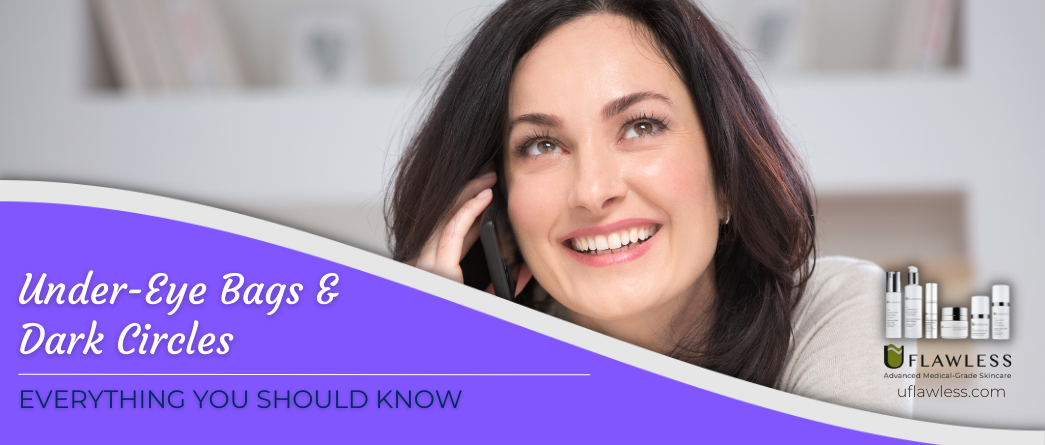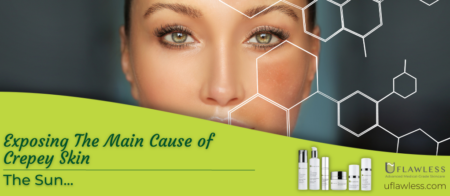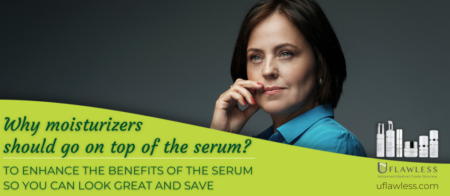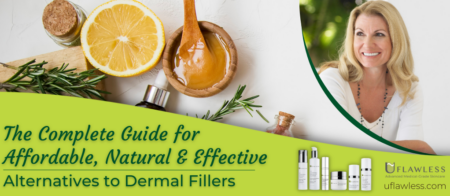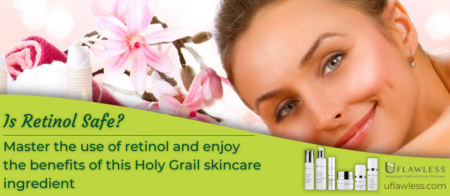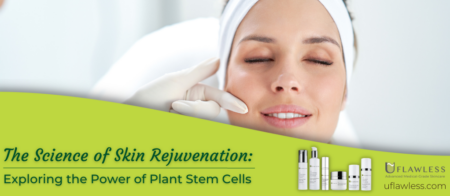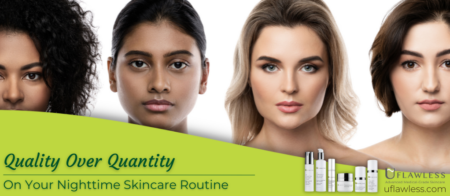Everything You Need To Know About Under-Eye Bags
One of the most common concerns that many people have is the seemingly sudden appearance of under-eye bags. Some days, our eyes may look more tired and saggy than others, leading to overwhelming discussions on this subject. So, what causes this under-eye puffiness and how can it be remedied? In this article, we’ll cover everything you need to know about under-eye bags.
Are Under Eye Bags and Dark Circles Under Eyes the Same Thing?
Dark circles
It is characterized by a darkening area under the eyes, presenting a purplish or brownish hue.
It’s important to note that this is not due to infection or trauma.
Under Eye Bags
On the other hand, refer to mild or severe swelling or eye puffiness.
This becomes more common as we age due to the thin and delicate skin structure around our eyes.

What Are The Top 3 Causes of Under-Eye Bags?
- Inability to Drain Fluids – The eye area can accumulate fluids due to the lack of muscle tissue in this “empty” space. When this accumulation occurs, the eyes begin to show signs of swelling or under-eye bags.
- Weak Capillaries – As we age, the tiny blood vessels or capillaries around our eyes can become fragile, resulting in leakage. This can exacerbate the appearance of under-eye bags.
- Loss Of Elasticity – Skin elasticity is another factor that plays a significant role in maintaining the youthful appearance of our eyes. With age, the skin becomes less elastic and begins to sag.
Can Under-Eye Bags Be Treated?
There are several treatments for under-eye bags, and each one of them has to be looked at carefully to adapt to your needs and lifestyle.
Let’s take a look at the details of each one of them.
Natural Eye Treatment for Under Eye Bags
While there are several over-the-counter products and treatments available for under-eye bags, sometimes the best solution lies in nature.
- Cucumber: Due to its anti-inflammatory properties, cucumber slices have long been used to reduce puffiness and soothe tired eyes.
- Cold Compress: A simple cold compress can constrict blood vessels and reduce swelling under the eyes.
- Tea Bags: Both green and black teas possess anti-inflammatory properties. Applying cooled tea bags to the eyes can help reduce swelling and soothe the skin.
If natural remedies don’t provide the desired results, it might be time to consider medical-grade skincare products.
Medical-grade skincare can be an effective way to treat under-eye bags.
Using high-quality eye creams containing ingredients like antioxidants, vitamin C, retinol, and hyaluronic acid can help diminish the appearance of eye bags.
UFlawless – X3 Peptide Eye Serum is a great example of skincare that address the top 3 causes of Under Eye Bags (Poor drainage of fluids, Fragile Capillaries, and Loss of elasticity).
Other safe, affordable, and smart alternatives to treat under-eye bags.
- Lymph Massage helps in moving the accumulated fluids in the under-eye area, thereby reducing eye puffiness.
- Slowing Down The Aging Process The best way to tackle under-eye bags is to adopt healthy habits, which we are going to see in detail below.
- Reducing Salt Intake A diet high in sodium can lead to water retention, contributing to under-eye bags.
- Limiting Alcohol Consumption Alcohol can dehydrate the skin, which exacerbates the look of bags under the eyes.
- Sun Protection – Using an SPF 30 (at least) or higher sunscreen helps protect the skin around the eyes from damage due to sun exposure.
- Quitting Smoking – Smoking speeds up the skin’s aging process and worsens the appearance of eye bags.
- Adequate Sleep – Getting at least seven to eight hours of sleep every night can significantly reduce the appearance of eye puffiness.
The X3 Eye Peptide Serum is formulated to address the top causes of under-eye bags and dark circles – poor drainage of fluids, weak capillaries, and loss of elasticity in the eye contour area. 100% satisfaction guaranteed!
Both quality and quantity of sleep can influence the appearance of your eye contour area.
Lack of sleep can lead to dark circles and puffiness. On the other hand, too much sleep can cause fluid accumulation leading to bags under the eyes.
Therefore, aim to get around 7-9 hours of restful sleep every night.
- Hydration: Water is crucial for maintaining overall health and is especially important for skin health. Lack of hydration can make your skin look dull and enhance the appearance of under-eye bags. Aim to drink at least 2 liters of water per day.
- Healthy diet: Consuming foods rich in vitamins A, C, and E, and antioxidants can help improve skin health. Foods high in these nutrients include carrots, sweet potatoes, oranges, strawberries, and nuts.
- Exercise: Regular physical activity can improve your blood circulation, which can help reduce puffiness under your eyes.
- Removing Makeup Before Sleep – Sleeping with makeup can irritate the skin and contribute to under-eye bags.
- Treating Sinus Issues – Sinus problems can lead to water retention around the eyes, making them look puffy.
Things We Can’t Control Regarding Under-Eye Bags
- Hereditary Factors – Genetics play a crucial role in the formation of under-eye bags. If your parents or grandparents have them, chances are, you might get them too.

Understanding Skin Elasticity and Its Role in Eye Puffiness
Elasticity is one of the defining factors of healthy, youthful skin.
As we age, our skin’s elasticity decreases, leading to several changes, including the development of under-eye bags.
The skin around our eyes is particularly sensitive to these changes due to its thin nature.
Elasticity is primarily determined by two proteins: collagen and elastin.
Collagen provides structure and firmness, while elastin allows the skin to return to its original state after being stretched or contracted.
As we age, the production of these proteins slows down, causing the skin to lose its elasticity.
Maintaining skin elasticity, particularly in the under-eye area, involves lifestyle habits like balanced nutrition, sufficient sleep, proper hydration, and the use of appropriate skincare products as we saw above.
Prevention: The Key to Avoiding Under-Eye Bags
Prevention is always better than cure. A few simple measures can help prevent the formation of under-eye bags:
- Avoid high-sodium foods, as they can cause fluid retention leading to puffiness.
- Limit alcohol intake, as it can dehydrate the skin, enhancing the appearance of under-eye bags.
- Protect your eyes from the sun. Excessive sun exposure can damage the skin and contribute to under-eye bags.
- Refrain from smoking. Smoking can damage your skin’s collagen, causing it to lose elasticity.
- Make sure to remove makeup before sleep to avoid irritating the delicate skin around your eyes.
Remember, under-eye bags aren’t a health threat, but they can affect your self-esteem. With these tips and treatments, you can address this common issue effectively.
Under Eye-Bags and Lack of Confidence
Under-eye bags and dark circles can be a nuisance, affecting your appearance and confidence.
They can result from various factors, including aging, lifestyle habits, and genetic predisposition.
While under-eye bags might seem inevitable with aging, understanding their causes and mechanisms allows us to implement effective strategies for prevention and treatment.
Incorporating healthy habits, a nutritious diet, and medical-grade skincare products can make a significant difference in maintaining the skin’s health and elasticity, helping to prevent and reduce under-eye bags.
Meanwhile, professional treatments offer promising solutions for more stubborn cases.
Remember, your skin is a reflection of your overall health, and taking care of it requires a holistic approach.
With the right lifestyle choices and skincare routine, you can keep under-eye bags at bay and enjoy a youthful, radiant look.
FAQs About Under-Eye Bags and Dark Circles
Q1: Can eating healthy food improve my skin’s appearance? Yes, a diet rich in fruits, vegetables, lean proteins, and healthy fats can improve skin health.
Q2: Is there a natural treatment for under-eye bags? There are many home remedies like cucumber slices, tea bags, or chilled spoons that can offer temporary relief from under-eye bags.
Q3: Can allergies cause bags under the eyes? Yes, allergies can cause under-eye bags due to the inflammation and swelling that they induce.
Q4: Are eye creams effective in treating under-eye bags? Yes, certain eye creams with ingredients like caffeine and hyaluronic acid can help reduce eye puffiness.
Q5: Is it necessary to consult a doctor for under-eye bags? While under-eye bags are typically harmless, if they are accompanied by redness, itching, or pain, it’s crucial to consult a doctor immediately.
Scientific References about Dark Circles and Under-Eye Bags
- The Effects of Sun Exposure on Skin: Dermato-Endocrinology Journal
- Stress and Skin Aging: This article from the journal Inflammation & Allergy Drug Targets
- Ambient Air Pollution and Skin Aging: Journal of Dermatological Science


